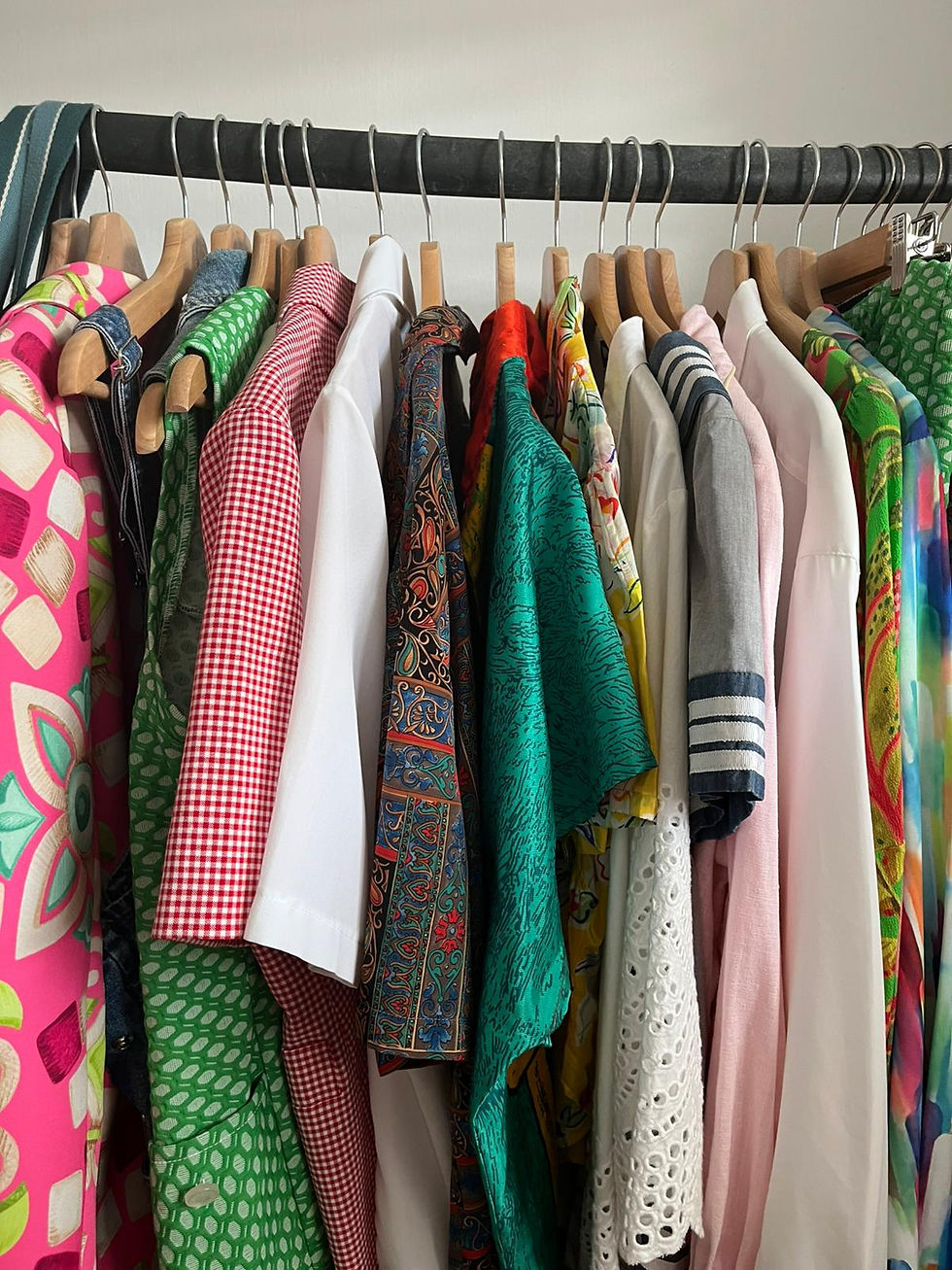The History of Fast Fashion
- tamaralevy8
- Jul 18, 2023
- 3 min read
What are the origins of fast fashion?
The beginnings of fast fashion can be traced back to the Industrial Revolution in Great Britain, back when the rural exodus took place. For the first time, people were no longer working to provide for their own needs but were employed at factories.
The reorganization of labor meant the working class needed clothing to wear and with the rise of technology, clothing was able to be produced at a faster pace and for a lower price. The demand kept growing and the supply increased to match it. The ancestor of fast fashion was born.
What were the conditions back then in textile factories?
Well, terrible. Workers, including women and children, had very long shifts. They were working for 12 hours, with two breaks a day, one for lunch and one for dinner, and often in very insecure environments. Maternity leaves, sick days, and paid holidays were a far distant dream for workers of that period. The wages were also very low and kept low because so many people were willing to work. Employers would always find workers even for such meager salaries, but not for long.
As time went on, labor unions started forming and rights for workers started to emerge, such as the National Insurance Act in 1911, which established a national system of insurance to protect working people against loss of income relating to sickness or unemployment.

Women Mill workers in Rochdale, Lancashire, 1911. © Grenville Collins/Mary Evans/Alamy
Fast forward a century, due to the high costs, the wages, and the multiplication of social benefits, the factories moved abroad, to countries with little regulations and very cheap labor.
To put things into perspective, let's look at the number, in 1960, 95% of the clothes bought in the USA were made in the USA, this figure had dropped to 2% in 2010.
Is a country's industrialization the path towards regulations, higher salaries, workers' rights, or maybe even a way for third-world and developing countries to reach the rank of global economy?
The Factory of the World
Fashion production was outsourced to cheaper countries abroad, one of them even became " the factory of the world".
China, though, once the “factory of the world” is slowly losing its title due to labor costs rising in the manufacturing sector. The wages almost tripled, from 30,000 yuan/ year ( $4,200) in 2010 to 82,000
( $11, 480) in 2020.
The textile industry contributed to the economic development of China and ultimately to raising the salaries of workers and bettering their living conditions.
Could it be the same for the new manufacturing countries of fast fashion, such as Bangladesh?
Fast-fashion companies set up in countries with cheap labor costs and almost no regulations, allowing them to produce at the lowest possible cost while never being legally concerned about their practices.
However, over the years, workers tend to demand more rights, living wages, and safer working conditions, the process repeats itself, whether in England during the Industrial Revolution or in China, over the last two decades.
Once the labor costs rise, factories tend to flee to new cheaper unexplored lands, with, often, fewer regulations, such as Bangladesh. Officially, the minimum salary is 8,000 BDT/ month ( $ 73,75), over 12 times lower than in China.
Despite the alarmingly low pay, the Bangladesh Accords were signed after The Rana Plaza, to protect the lives of garment workers, through inspections, training, and factory upgrades. The Accords have been signed by global brands and trade unions. They contributed to bettering the conditions of garment workers in the country and marked the start of the social consciousness for workers' rights.
Is it a re-make of the past?
We often forget that just over a 100 years ago, Western Europe was the heaven of clothing factories where workers lived in awful conditions, working long hours with very little pay and no workers' rights.
Fast forward to 2023, fast fashion still exists and workers are now exploited on the other side of the world.
Even if they decided to leave, more needy people in those regions would take on such jobs, because, at the end of the day, they need the money, no matter how little is it, to survive. The dilemma is still going on, factories and fashion brands contribute to developing countries, by raising wages and implementing regulations. However, at what costs?
A solution could be to push Western regulations in developing countries, especially when at the top of a supply chain is a powerful Western brand, selling a piece of clothing for more than the monthly salary of a seamstress paid to make it.
What do you think? 💭
Do you think factories contribute to help develop third-world countries? Do you think that the process repeats itself over the centuries?



Comments